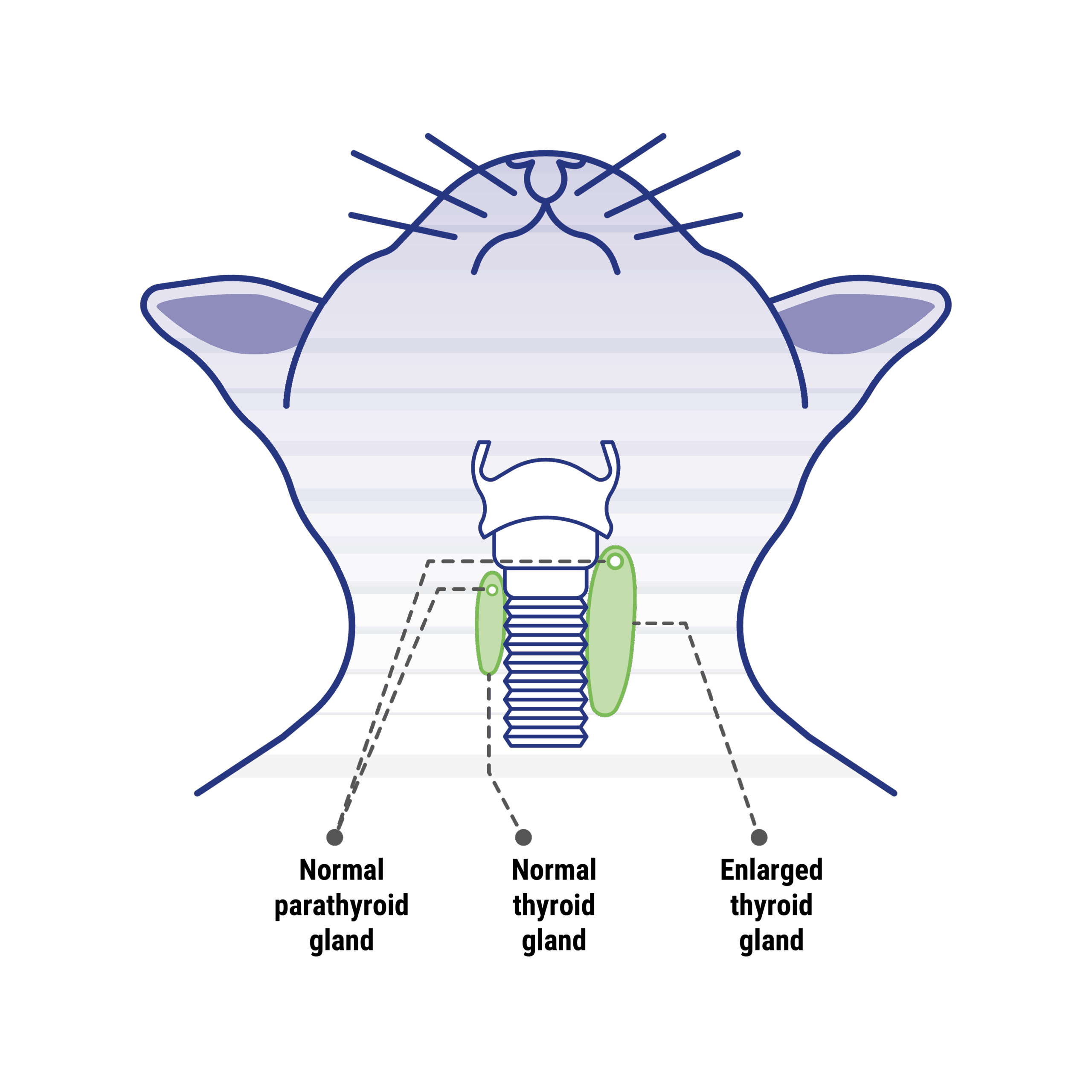Around 1 in 10 cats is affected by hyperthyroidism after the age of 9. Could your cat be suffering in silence?
It occurs when the thyroid gland—located on either side of the windpipe in the neck—produces too much of the hormone thyroxine (T4). This hormone controls the body’s metabolism, which is how quickly the body uses energy. When levels of thyroxine are too high, everything speeds up.
You might notice your cat becomes restless or irritable, eats more but still loses weight, or seems generally more active than usual. Internally, their organs are being pushed to work harder than normal, especially the heart and kidneys. If left untreated, hyperthyroidism can lead to serious complications including heart failure and kidney disease.
Thankfully, it’s usually easy to diagnose with a blood test. There are several treatment options available—from medication to surgery to dietary management—and with the right care, most cats go on to live a happy, healthy life.

What to look out for

If you notice any signs of hyperthyroidism—or if you’re simply worried about your cat’s health or behaviour—book an appointment with your vet straight away.
Weight and muscle loss over the back and hips, despite a healthy or increased appetite
Scruffy, greasy or matted coat
Avoiding warm spots or laps
Occasional digestive upsets
Eating more and sometimes drinking more
Changes in behaviour—anxious, irritable, restless or occasionally more withdrawn
More frequent toileting
Faster breathing or panting
How is hyperthyroidism managed?
Most cats start with daily medication—either tablets or a liquid version that’s won awards for being easy to give. Your vet can help you choose the option that’s least stressful for both of you.
The medication works by reducing the amount of thyroid hormone produced, bringing levels back to normal. Regular blood tests are important to monitor your cat’s response and ensure the dose is just right.
Sometimes, underlying conditions like kidney disease can be masked by hyperthyroidism. These may become more obvious once treatment begins.
Once stable, your cat can stay on medication long term, or your vet may discuss other options like surgery or radioiodine therapy—both aimed at permanently reducing thyroid activity. Your vet will talk you through the pros and cons of each approach, so you can choose what’s best for your cat.
In most cases, cats diagnosed with hyperthyroidism respond very well to treatment.
Could your cat be suffering from hyperthyroidism?
It’s always better to catch things early. If you’re worried your cat might be showing signs of hyperthyroidism—or you just want peace of mind—fill in the form below. Once we’ve reviewed your answers, we’ll be in touch if anything needs a closer look.
